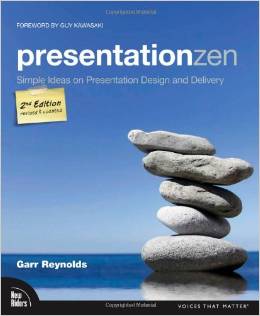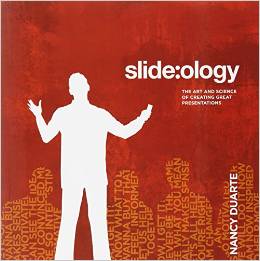How To Deliver A Great Speech
A couple of weeks ago a posted a Slideshare“How to design a great speech”. So far, it’s had almost 10,000 views!
In this post I’m expanding on the companion Slideshare, and it’s all about what happens on stage, after you’ve done the design work.
Enjoy!
MORE DETAILS
1. REMOVE SURPRISES
I have made every mistake possible when it comes to set-up. I’ve forgotten to plug in my laptop (the battery ran out half-way through my speech), forgotten to turn my mic on, left my notes behind, didn’t test sound on movie clips…need I go on?
A bit of preparation will save many embarrassing moments. Here are some simple checks:
- Test equipment and sound. I always check the range of the remote mouse so I will know how close I have to be to the stage to advance a slide.
- Stand on stage and get comfortable. I envision the show starting: how do I want to feel? Where will I look? Will I be holding notes?
- Decide where your notes, laptop, water, and props will be. This is basic stuff, but I want to remove all the guess work. When I step on stage I am going. I don’t want the audience to see me fiddling around. I want to deliver value right away - that’s what I’m paid for.
Pro Tip: create a simple checklist on your phone.
2. WARM UP THE CROWD
I think speakers who show up just before their time on the agenda and leave immediately after they sign a few books are insulting their audience. I want my audience to know me and trust me. It’s simple: people learn better from people they know and trust - that starts before you get on stage.
Here’s how to make it happen:
- interview 3-5 delegates ahead of time. You gain valuable insights and they spread the word. It’s a bit of work and requires some coordination, but after having done this hundreds of times, I can tell you it pays off.
- arrive early with a goal to meet as many delegates as possible.
- eat meals with delegates (not at the VIP table) and remember their names
Pro Tip: when delegates as you questions, answer politely and briefly and then turn it around and ask questions about them. You are there to deliver. You don’t learn anything by talking about yourself.
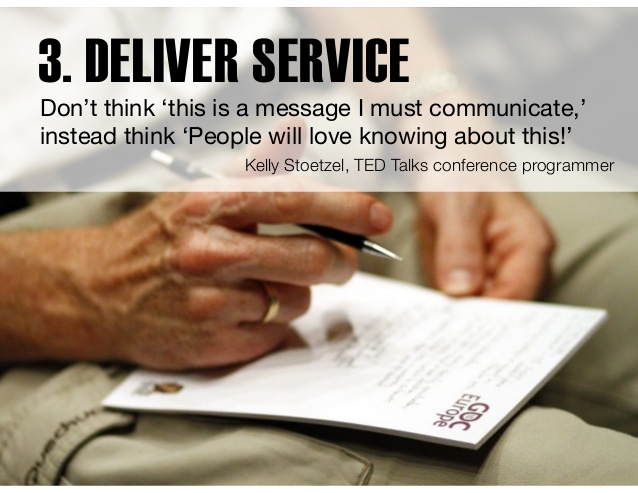
3. DELIVER A SERVICE, NOT A LECTURE
Don’t think “This is a message I must communicate,” instructs Kelly Stoetzel, TED Talks conference programmer, “instead think ‘People will love knowing about this!’”Ask yourself:
- is my primary intention to: teach, motivate, inspire, or entertain?
- what is one idea, lesson, insight I want them to have 24 hours from now?
- how do I want to feel at the end? (start feeling that now)
4. DROP 50% OF YOUR SLIDES AND MAKE THEM BETTER
"If everything is important, then nothing is important." Garr Reynolds, author, Presentation Zen.
You are the message. Slides should be reference points to accent your message.
- avoid fancy animations, unrelated video clips, crazy fonts, and unreadable graphs. If you consider yourself a professional, then read Presentation Zen, and Slide:ology (Nancy Duarte). Garr and Duarte are the experts in this field. You will save years of experimentation with these two books.
- use large, original, clear images that capture the essence of your point
- don’t use full sentences that repeat what you’re saying
5. USE STORIES TO TEACH
Learn how to wrap your lesson in a unique memorable story and you will have raving fans promoting you, even years later. Use this formula:
- Bridge - connect from last point to new topic
- Story - short, relevant, original, and ideally funny
- Lesson - draw a lesson from the story you know they need
- Application - explain how this relates to their work/life/relationships
Pro Tip: give 2-3 specific ways they can use this solution now
6. KILL YOUR OPENING AND CLOSE
People remember the first few minutes (primacy) and the last few minutes (recency) - so make them outstanding!
- Jump right into a story you practiced - audiences love a good story
- Never, ever rush the close.
Pro Tip: have a drop dead cut off time to start your close. I don’t know how many speakers I have seen rush through the last 15 slides, and in a panicked voice try to motivate an audience or sell back of room all in three minutes. Amateur. No one will miss what isn’t there. Punch the number of your closing slide into the keyboard, jump to your close, and forget the rest. Your audience deserves a good close, the rest is only important to you.
- Close with a summary, motivation, and your call-to-action.
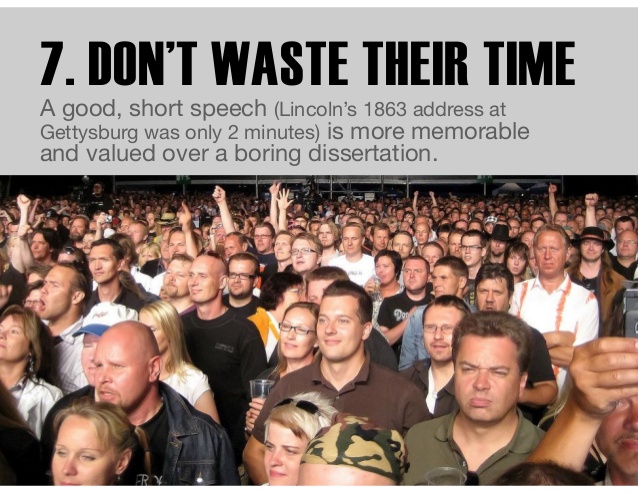
7. DON’T WASTE THEIR TIME
A good, short speech (Lincoln’s 1863 address at Gettysburg lasted only two minutes) is more memorable and valued over a boring dissertation.
- don’t say you’re excited to be there - get on with the delivery!
- don’t fiddle with your notes, water, remote, microphone, or laptop - be prepared to launch as soon as you step on stage.
- don’t talk about your taxi ride, hotel, or flight there - Pro Tip: the more your life appears different the less they trust you.
8. USE VOCAL VARIETY
Auditory learners make up 20-30% of your audience. In addition, everyone will pay more attention if you pay more attention to how you deliver your message:
- speed up: something good is coming
- slow down: means pay attention
- lower your voice: suggests confidence and trust
- pause: means that was important
9. MOVE ON PURPOSE
Use movement on stage to hold audience attention and accent your message.
- Step forward to make a point
- Raise your hands to get attention
- If telling a story, deliver the lines of each character from a different location.
Pro Tip: move to their right when talking about the future (to their left is the past)
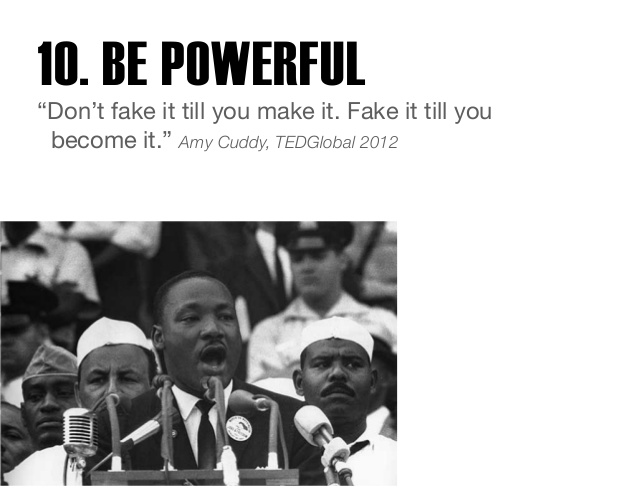
10. BE POWERFUL
Here’s a secret: audiences want you to succeed, so step up and take charge.
“Don’t fake it till you make it. Fake it till you become it.” Amy Cuddy, TEDGlobal 2012
- Use power poses (standing with hands on hips and feet spread, like Wonder Woman or Super Man) for two minutes before stepping on stage.
- Stay anchored when making a point
- Smile (it’s contagious) “When you’re smiling, the whole world smiles with you.”Louis Armstrong
11. TRAIN THE AUDIENCE
Teach your audience to respond during your speech and they’re more likely to: enroll in a program, buy your book, or even give a standing ovation.About every 20 minutes have them:
- talk with their neighbour
- solve a problem
- journal an insight or new goal
- play a learning game
- stand and move
Above all,be yourself,focus on helping,stay on time,and enjoy the rideIf you found this was valuable, please tell me in the comments below - I want to know! Thanks.
Small Wins - Why Little Steps are the Path to Big Rewards
Keynotes and workshops by Hugh Culver



